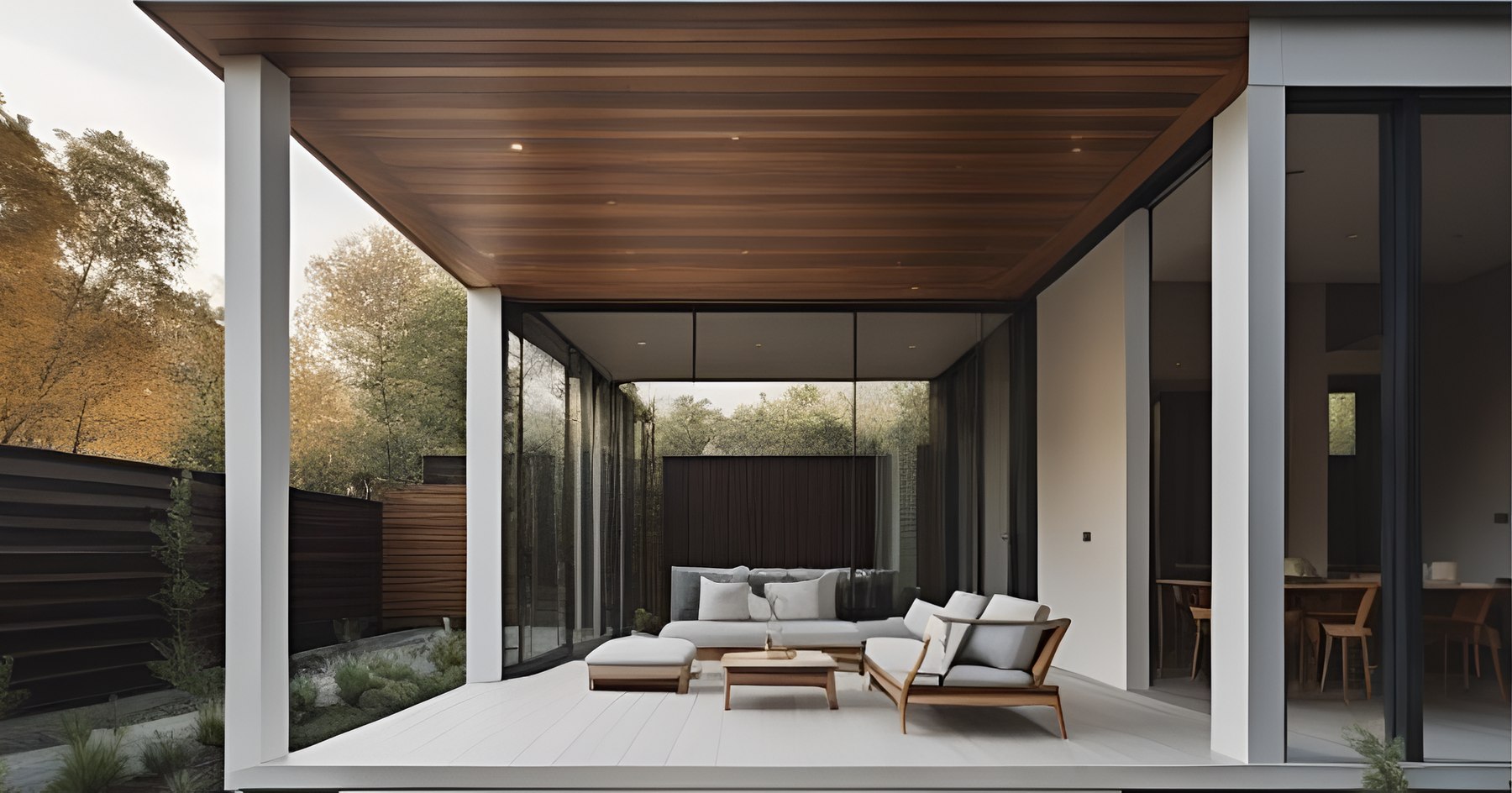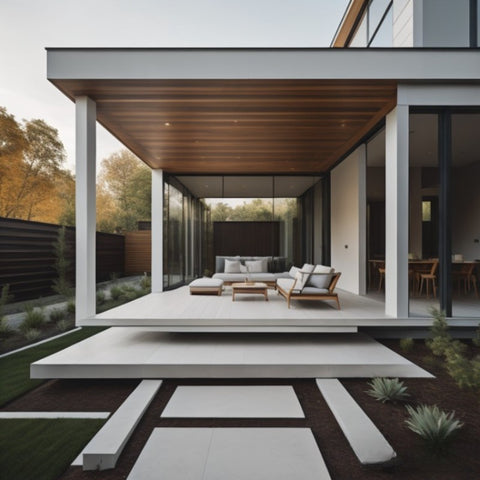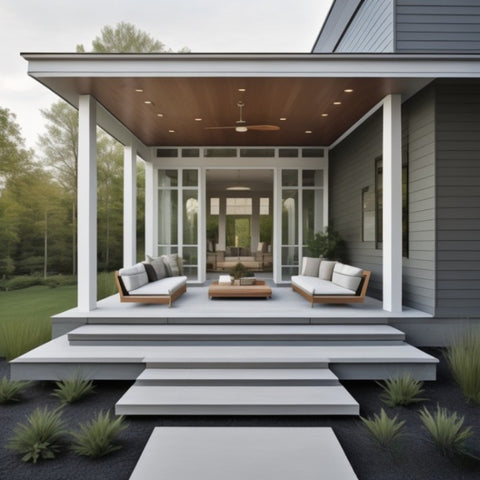
Porch vs Veranda: Spot the Difference!
In this article, we will explore the unique aspects that define the difference between a porch and a veranda. Discover the various characteristics and features of each outdoor space to determine which one suits your home best.
Key Takeaways:
- Understanding the difference between a porch and a veranda is crucial when considering outdoor spaces for your home.
- Porches and verandas have distinct design elements and purposes.
- Porches are typically attached to the main structure of the house and provide a cosy and intimate outdoor space.
- Verandas, on the other hand, are often larger and open-air spaces that offer shelter from the elements.
- Consider your personal style and the climate in your area when deciding between a porch or a veranda.

Understanding Porches
Welcome to the fascinating world of porches! In this section, we will dive deep into the characteristics and features that define these popular outdoor spaces. By exploring their purpose, design elements, and typical features, you'll gain valuable insights into the meaning of porches and how they differ from verandas.
Porches have a rich history and have evolved over time to become an integral part of many architectural styles. They offer a welcoming entrance to homes and serve as an extension of the indoor living space. One of the key features of porches is their versatility. They can be open or enclosed, acting as a transition zone between the interior and the great outdoors.
Throughout history, porches have played a significant role in social interactions and community life. They have served as gathering spaces, where families and friends come together to enjoy the fresh air, engage in conversations, and simply relax. Today, porches continue to be cherished spaces that allow homeowners to connect with nature and create memorable moments.
Design Elements
Porches come in various designs, adding character and charm to different architectural styles. They can be found in traditional Victorian houses, quaint cottages, and modern farmhouse-style residences, among others. Some common design elements of porches include:
- The use of columns or pillars, which provide structural support and add a touch of elegance
- Roofing or covering, offering protection from the elements
- Railings or balustrades, enhancing safety while adding aesthetic appeal
- Flooring materials such as wood, brick, or stone, creating a distinct look
- Furniture and accessories, allowing homeowners to personalise their porch spaces
These design elements contribute to the unique charm and character of porches, making them a sought-after feature in many homes.

Evolution and Usage
Porches have evolved over the centuries, adapting to changing needs and architectural trends. In the past, they were primarily used as utilitarian spaces for functional purposes, such as keeping muddy boots or providing shelter for guests. Over time, porches transformed into more inviting and comfortable spaces, serving as places for relaxation, entertainment, and socialising.
Today, porches are used in a variety of ways. They can be cosy retreats where homeowners enjoy a cup of tea while reading a book, vibrant entertainment areas where guests gather for parties and celebrations, or tranquil spots where families spend quality time together. The usage and design of porches depend on individual preferences and the intended function of the outdoor space.
By delving into the world of porches, you'll gain a better understanding of their significance, design elements, and how they differ from verandas. In the next section, we will explore the captivating world of verandas, shedding light on their unique features and cultural importance.
Exploring Verandas
In this section, we will take a closer look at verandas. Verandas have a rich history and hold significant cultural value in different parts of the world. Understanding the key characteristics of verandas, including their design, placement, and functionality, will help you appreciate their unique appeal.
Origin and Cultural Significance
The concept of verandas originated in India during the colonial era and quickly spread to other countries. They were initially used as open-air spaces to provide shade and ventilation in the hot and humid tropical climate. Today, verandas are cherished for their ability to create a seamless transition between indoor and outdoor spaces, offering a relaxed and inviting atmosphere.
Design and Placement
Verandas are typically attached to the main structure of a house and extend along one or more sides. They are usually covered and supported by columns or pillars, providing structural stability and architectural elegance. Verandas can be found at various levels of a building, such as the ground floor or higher stories, offering different viewpoints and perspectives of the surrounding landscape.

Functionality
Verandas serve multiple purposes, making them versatile outdoor spaces. They can be used as lounging areas, dining spaces, or even as sheltered pathways connecting different parts of a property. With their ample space and protection from the elements, verandas provide an ideal setting for relaxation, entertaining guests, and enjoying the beauty of nature.
By comparing verandas to porches, you'll gain a better understanding of how these outdoor spaces differ from one another. Let's explore the distinctions between verandas and porches in the next section.
Conclusion
In conclusion, both porches and verandas offer unique outdoor spaces that can enhance the aesthetics and functionality of your home.
Porches are characterised by their covered structure, typically attached to the front entrance of a house. They provide a cosy and inviting space, where you can relax and enjoy the outdoors while being sheltered from the elements. Whether it's a small, open porch or a screened-in veranda, this outdoor extension is perfect for casual gatherings or spending a quiet evening.
On the other hand, verandas are often associated with a touch of elegance. These spacious, open-air areas extend along the side or back of a property and offer panoramic views of the surroundings. Verandas are versatile spaces that can accommodate various activities, from alfresco dining to hosting larger gatherings. Their grandeur and open design create a seamless connection between your indoor and outdoor living areas.
When choosing between a porch and a veranda, consider your personal style, preferences, and the overall architectural design of your home. The porch offers a warm and intimate setting, while the veranda provides a more expansive and sophisticated experience. Both options add value to your property and create a welcoming atmosphere for you and your guests.
Other content you'll love:
Veranda vs Conservatory: Key Differences
Veranda Cost Guide: Plan Your Budget Smartly
Step-by-Step Guide on How Build Veranda
Polycarbonate vs Glass: Best Veranda Roof Choice
Lean to Veranda Explained – Enhance Outdoor Living
Install a Glass Veranda on Your Patio? Find Out!
Glass Sided Verandas: Can They Be a Reality?
Glass Room Comfort: Explaining the Warmth of a Glass Room
Exploring Outdoor Living: What is a Veranda?


